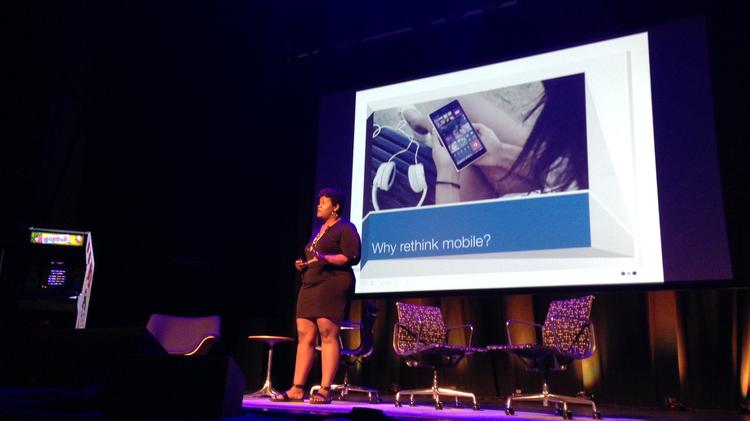
26 Aug TechFestNW: Seeking better ways that technology can spark diversity
Diversity within the tech industry is a clear overarching theme at this year’s TechFestNW.
The PDX Tech Diversity Pledge as well as the recently announced Inclusive Startup Fund were both mentioned on stage. Plus this year, TechFestNW attendees actively used the #WeAllWinPDX hashtag, coordinated by the University of Oregon Agora Journalism Center, when tweeting.
Along these lines, two morning presenters spoke directly to the importance of diversity. They talked about age, thought and economic background along with race and gender.
Latoya Peterson, deputy editor of voices for online news company Fusion and editor of the blog Racialicious, called on those in attendance to take notice that technology must reach beyond the mobile and smartphone categories.
“Look at the smartphone revolution,” said Peterson, speaking at the Southeast Portland event. “What if people aren’t using them the same way?”
Not everyone downloads app, so, Peterson asked, why are so many tools hidden from populations by being put in apps?
Peterson also asked those following the #WeAllWinPDX hashtag: “What spaces could use a mobile connection? What kinds of conversations can be fostered there?”
The good news is that as Portland has asked itself what can be done to diversify its tech community, the message may be sticking.
An audience member asked Peterson how to ensure he’s building access and not exclusivity.
Peterson responded that the questioner needs to make sure he connects to the community and looks outside of his own experience.
In San Francisco, where there are many issues surrounding gentrification and homelessness, apps won’t solve that problem. It’s going to take compassion, along with determining peoples’ needs.
“In San Francisco, people are solving problems of affluent, tech professionals,” she said.
There is also still too much focus on the desktop, since much of the population only has access to smartphones.
“Shouldn’t the onus be on us to create a better interface on mobile,” she said, instead of forcing someone into what the tech worlds thinks is best. “If they are on mobile, how do we make things accessible where they are?”


Sorry, the comment form is closed at this time.